Nova Scotia/Newfoundland
Canada, July 13th-22nd, 2024
July 13th- Arrived in Halifax
July 14th- Visited Joggins Fossil Cliffs
July 15th-Visited Blue Beach
July 16th-Visited Cape Breton Island, Drove
the Cabet Trail
July 17th- Visited Cape Breton Fossil Center
July 18th- Flew to St John's Newfoundland
July 19th-Visited Mistaken Point
July 20th-Whale and Puffin Tour, Hiked East
Coast Trail to North head Lighthouse
July 21st- Hiked the Pouch Cove Trail to Shoe
Cove
July22nd- Returned Home
This vacation had been planned
for two years but had to be postponed last summer because my
father became ill. We had several goals in mind. One was to have
a fabulous vacation and visit a place neither of us had ever
been. We enjoyed the spectacular Maritime scenery, hiked amazing
trails alongside the wild and rugged shorelines where you could
travel miles without any sign of civilization. The other reason
for visiting the Maritimes was to fulfill a long held dream of
mine to visit some of the most reknown fossil beds on earth,
namely the Fossil Cliffs at Joggins and Mistaken Point along
the southern Avalon peninsula. Both sites are designated World
Heritage UNESCO sites for their unique fossil beds which are
both rare and abundant at the same time. For a location to be
inscribed on the World Heritage list the site must be of "Outstanding
Universal Value to Humanity" either for its cultural or
natural significance to humankind. Only 227 sites in the world
have made the list for their unique significance and value to
natural history and science.
Joggins Fossil Cliffs along
the shores of the bay of Fundy, Nova Scotia, reveal the world's
most complete fossil record of terrestrial life from the Carboniferous
period (Pennsylvanian Period 310-325 million years ago). Also
known as the "coal age" this period of geological time
saw most of the world's future coal laid down in vast swamps
across equatorial earth. The world was very different from today
as the supercontinent Pangea was forming and what is called Nova
Scotia today was located along the equator. The dense tropical
forests that existed at that time consisted of fern like trees
growing along flooded river plains and swamps (flowering plants
and trees would not evolve for another 200 million years). Oxygen
levels were at its highest in earth's history (35%) and as a
result insects grew to tremendous sizes. Dragonflies with almost
1 meter wingspans and 2 meter long Millipedes roamed the forest.
Some of the earliest reptiles were emerging which would soon
give rise to the earliest lineage of mammals (Dinosaurs would
not evolve for another 100 million years!). The Joggins fossil
cliffs is home to the earliest known reptile "Hylonomous
lyelli".
The fossil cliffs are 14.7 kilometers
long and become progressively younger from north to south. The
length of the sedimentary rocks comprising the cliffs is essentially
a 15 million year timeline of geology and life as it existed
325 million years ago. Each human step represents roughly a thoudsand
years of geological time. The cliffs are bathed constantly by
the tides of the Bay of Fundy which claim the highest tides in
the world. The tides fluctuate almost 50 feet twice a day. With
each tide a bit more of the cliffs are eroded exposing new fossils
of ancient trees such as the giant Club Moss "Lepidodendron"
or the Horsetail "Calamites", or the early gymnosperm
"Cordaites". The beaches and cliffs are littered with
fossils almost everywhere you look and are replenished with new
fossils with each tidal cycle. Guests are not allowed to keep
any fossils but are encouraged to photograph and document them
for research purposes.
Joggins Fossil Cliffs, Bay of
Fundy, Nova Scotia
Click on images below for larger
images
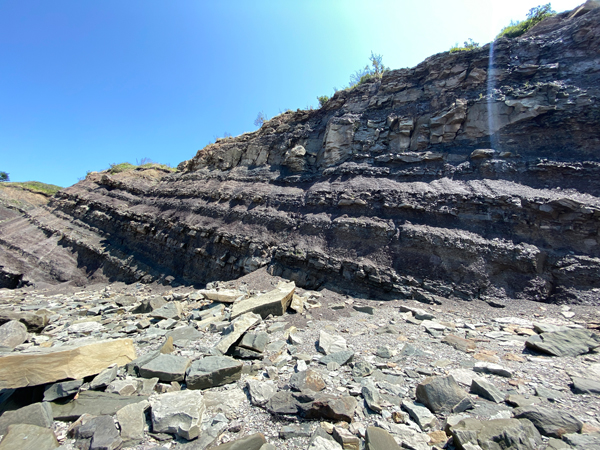 |
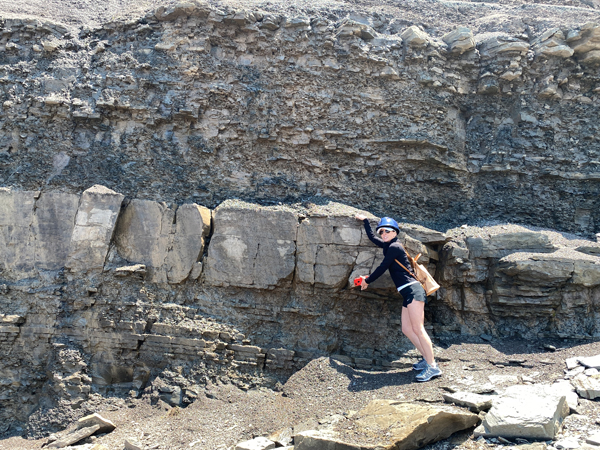 |
|
At Joggins we see beds of exposed
sedimentary strata, equivalent to three times the depth of Grand
Canyon recording 15 million years of geologic time (318-303 MYA)
along 15 km of shoreline |
Cindy showing a single strata
of mudstone likely formed over thousands of years |
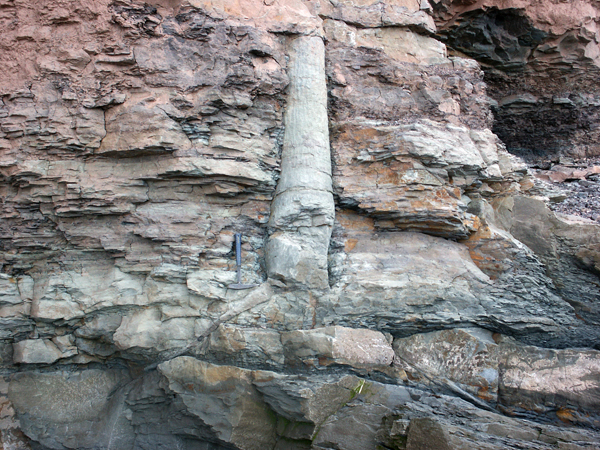 |
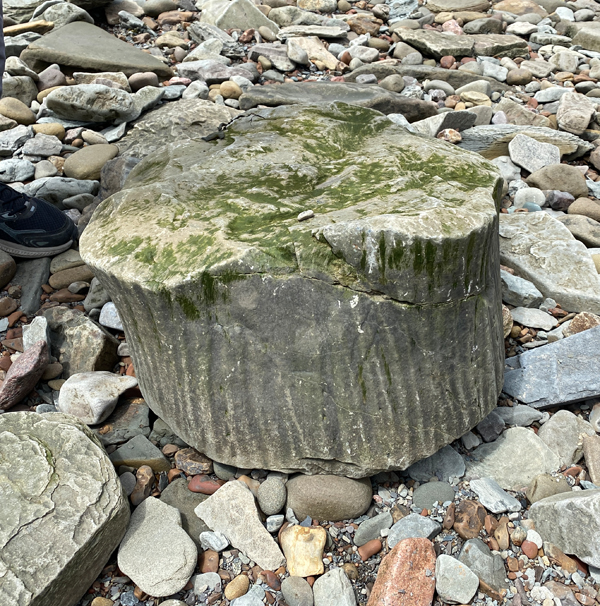 |
|
Lycopod tree trunk frozen
in time within the cliffs. |
Fossilized coal age tree
trunk (Sigillaria? Stigmaria?) found lying on the beach after
the tide receeded. Each daily tidal cycle brings new fossils
to the beach |
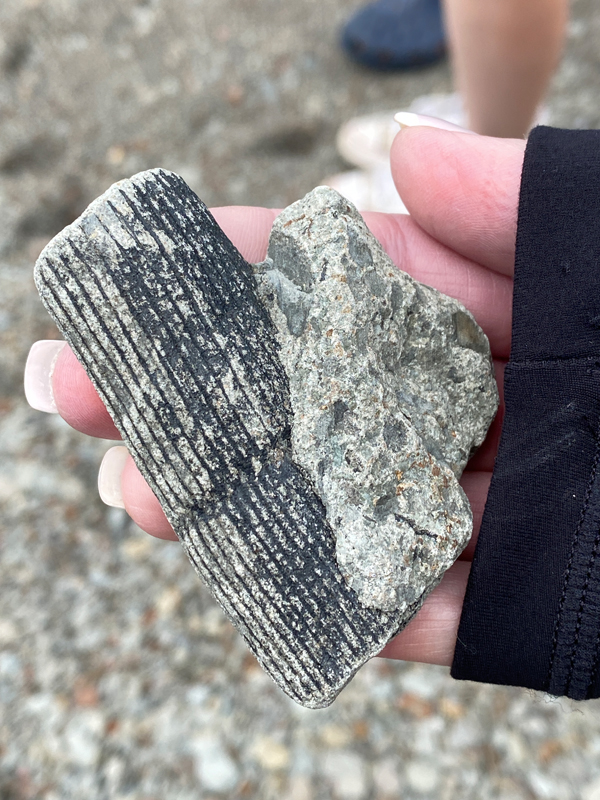 |
 |
|
A piece of Calamites bark
we found within minutes of walking out on the beach. Calamites
made up the understory of the vast Carboniferous forest. |
Carbonaceous Fossil of a
giant Club Moss, likely Lepidodendron. Lepidodendron made up
the tallest trees of the ancient forest reaching heights of 100
feet |
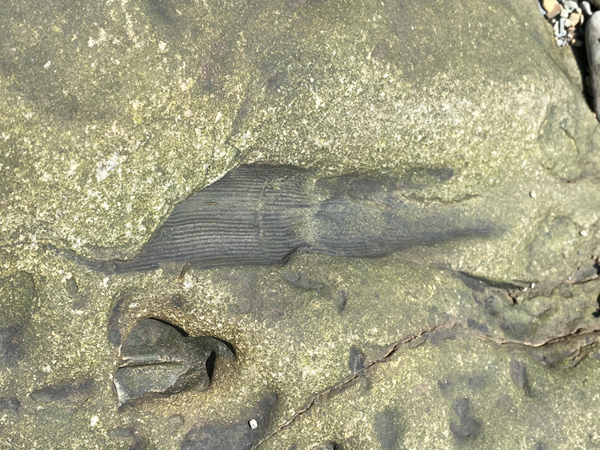 |
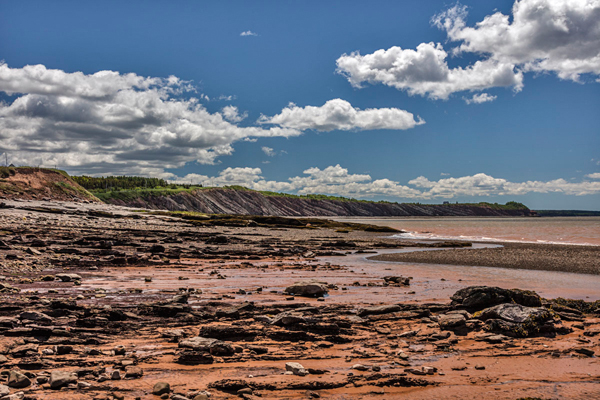 |
|
Calamites which made up the
understory of the ancient coal forest is the most common plant
fossil found along the cliffs |
During tidal recession the beach
at Joggins with fossil cliffs to the left and Bay of Fundy to
the right. The red sand and rocks are glacial till laid down
around 10,000 years ago. |
Mistaken Point,
Avalon Peninsula, Newfoundland
Named by 19th century sailors
for it's many shipwrecks, an outcome of its confusing similarity
to Cape Race Harbor, Mistaken Point contains one of the most diverse
and well-preserved collections of Precambrian fossils in the world.
Ediacaran fossils, named for the period in which they lived (640-540
million years ago), discovered in 1967 at the site represent the
oldest known remnants of multicellular life on Earth. After three
billion years of solely microbial life in earth's oceans the creatures
of the Ediacaran period represent a watershed in the history of
life on earth as the first large, biologically complex organisms
(when life got big). The location is a 17 km long strip of rugged
coastline rock along the avalon peninsula in Newfoundland province.
It was designated a UNESCO World Heritage site in 2016 and is
now known as the Mistaken Point Ecological Reserve.
The Avalon assemblage of Ediacaran
creatures are described as Metazoan Animals (Animals are multicellular,
eukaryotic, consume organic material, breathe oxygen, reproduce
sexually, have myocytes and are able to move) however the Ediacaran
creatures of Mistaken Point do not fulfill all these criteria
as many were sessile benthic inhabitants (meaning they were attached
to the seafloor and did not move) so their designation as belonging
to the kingdom Animalia remains controversial. That said the organisms
were definitely not plants as they existed below the photic zone
in the oceans and could not have carried out photosynthesis. Later
more recent ediacaran animals did show evidence of locomotion.
The earlier sessile forms were apparently filter feeding on plankton
and the later mobile forms fed on microbial seafloor mats. Predation
had not yet evolved. These organisms showed no evidence of mucle,
teeth or bones. Their soft body parts were surrendipidously preserved
by volcanic ash which killed them rapidly, burried them quickly,
and preserved them within an anoxic tomb on the seafloor (Ediacaran
Pompeii). Many years later the seafloor was uplifted by tectonic
activity and the volcanic ash eroded away revealing the soft body
fossils within the shale.
Ediacaran fossils can be found
at various locations on earth including its namesake, the Ediacaran
hills of southern Australia, Namibia, and other locations however
Mistaken Point contains the largest assemblage of the oldest and
most basic Ediacaran forms. More than 10,000 fossil impressions,
ranging from a few centimetres to nearly 2 metres in length, are
readily visible along the rock outcrops. Most of the fossils are
known as rangeomorphs, an extinct group of fractal branching organisms,
the simpliest creatures of the Ediacaran biota but as such likely
represent the very birth of animal life on earth, 40 million years
before the "Cambrian Explosion" which saw the emergence
of all modern animal phyla.
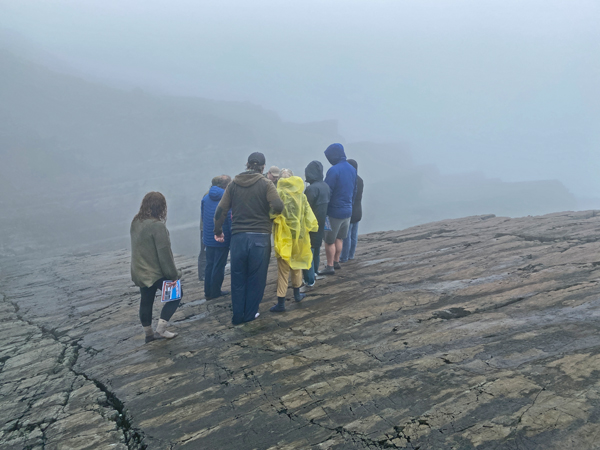 |
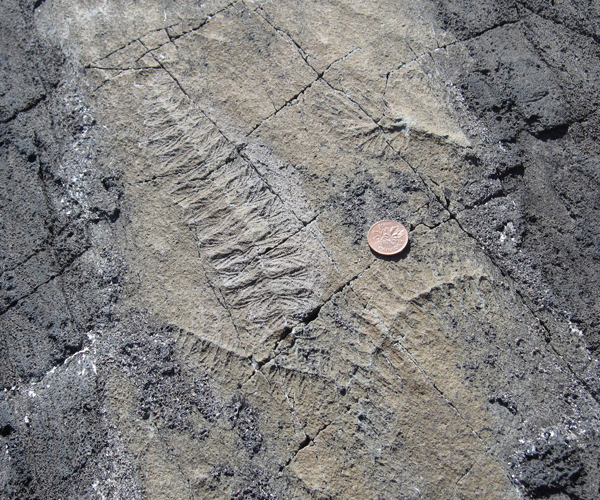 |
|
Our small group on the tennis
court size rock face viewing the fossils. Mistaken point is not
open to the public and viewings are conducted through arranged
guided tours. For a video of the area click the image or here
To SEE A VIDEO |
One of the many "Rangeomorphs"
with a coin to scale. (Courtesy of Wikipedia) |
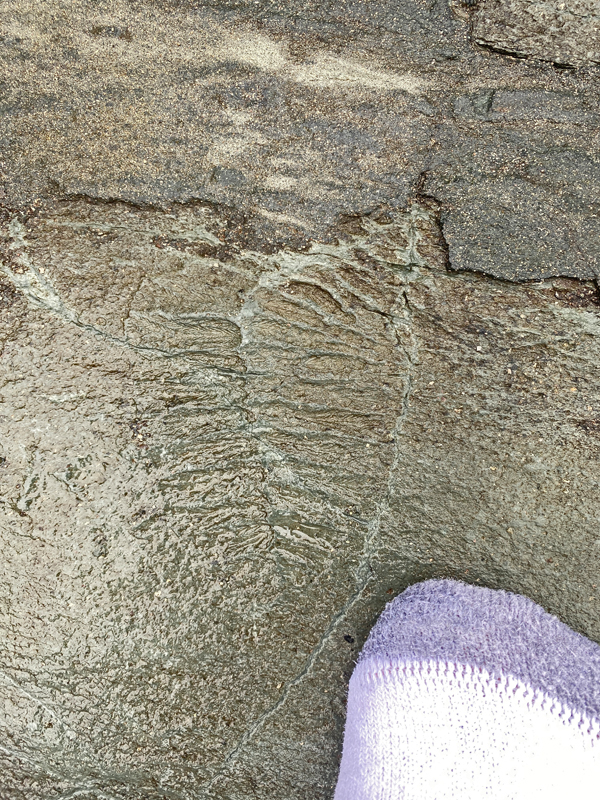 |
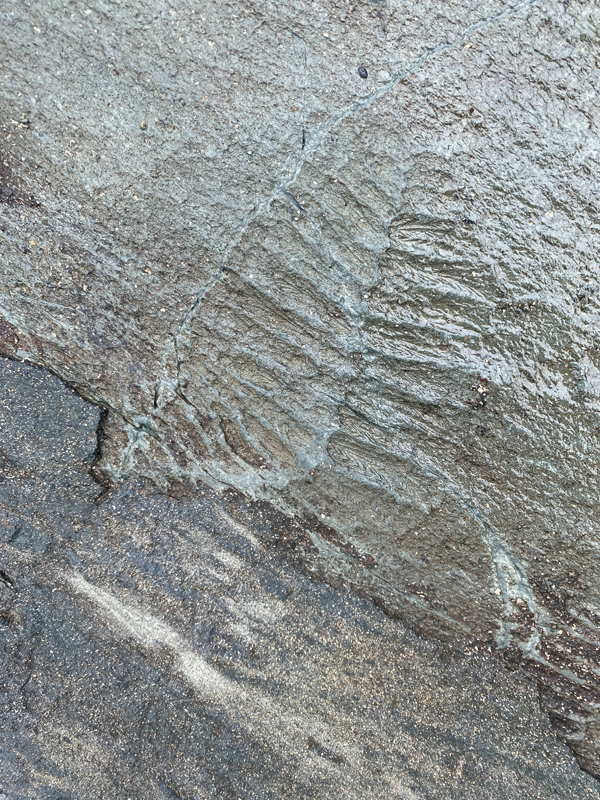 |
|
The fossils were literally everywhere
you stepped along the rock surface, frozen in time from an era
when the landmasses were sterile and all life existed solely
in the world's oceans (575 million years ago). We had to
remove our shoes before going out on the rockface (my foot) |
Rangeomorphs grew as branching
structures growing in a fractal pattern (one of the species is
named "Fractofusus misrai") on the seafloor. Such organisms
are described as Benthic which means inhabiting the seafloor. |
 |
|
|
A fossil of a complete Rangeomorph
with the stalklike structure which secured them to the seafloor. |
|
Scenic Photos from our trip
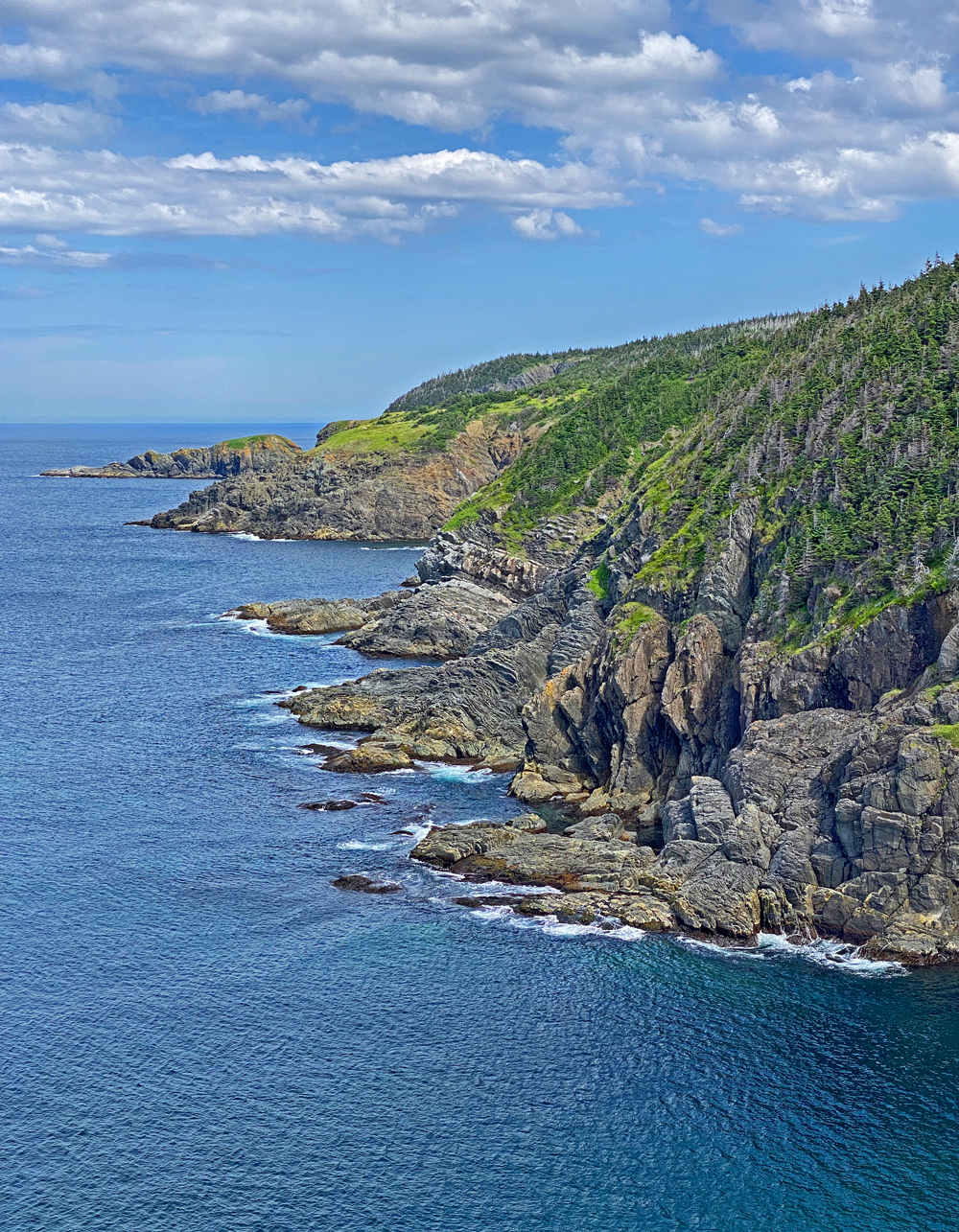 |
|
East
Coast Trail, Newfoundland |
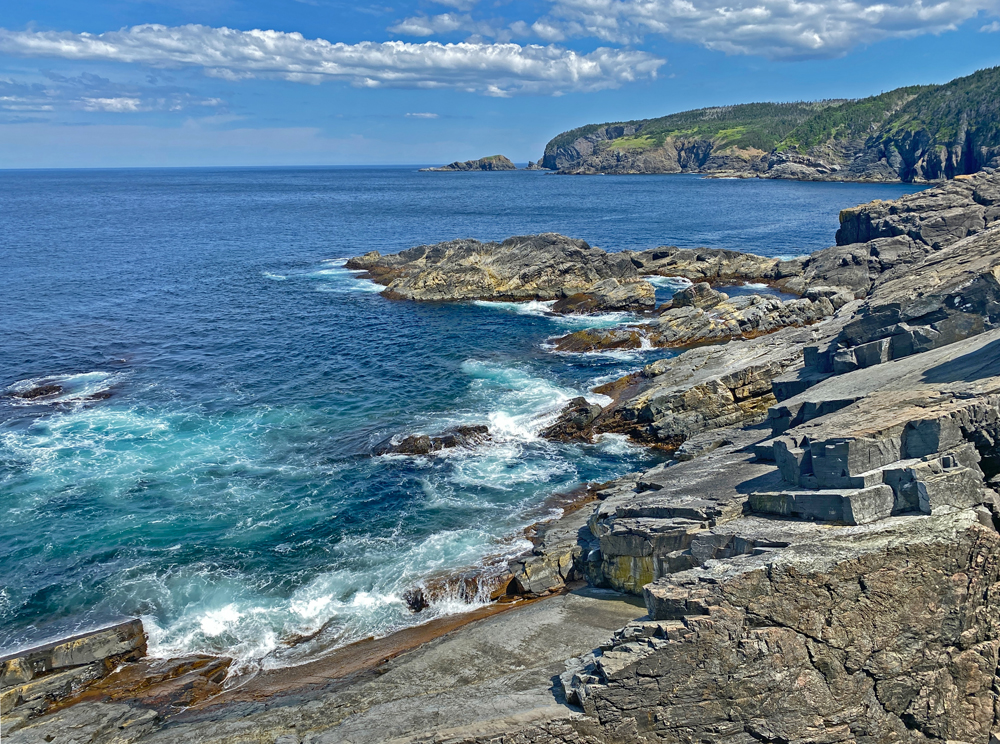 |
|
Pouch
Cove Shoreline, East Coast Trail, Newfoundland |
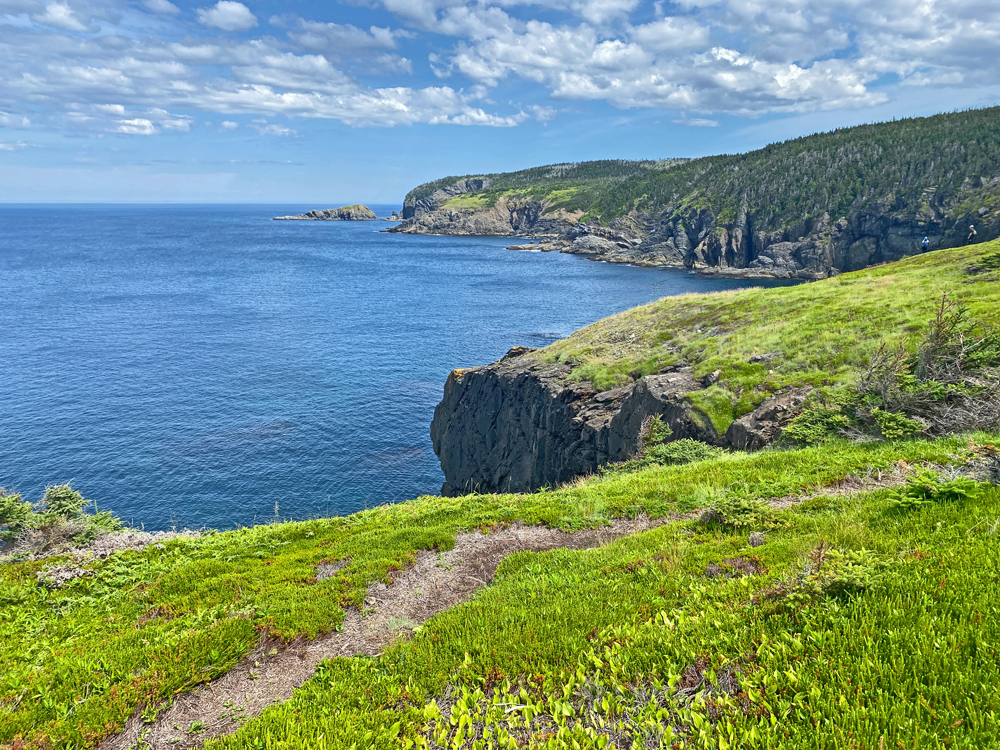 |
|
Pouch Cove, East Coast Trail,
Newfoundland |
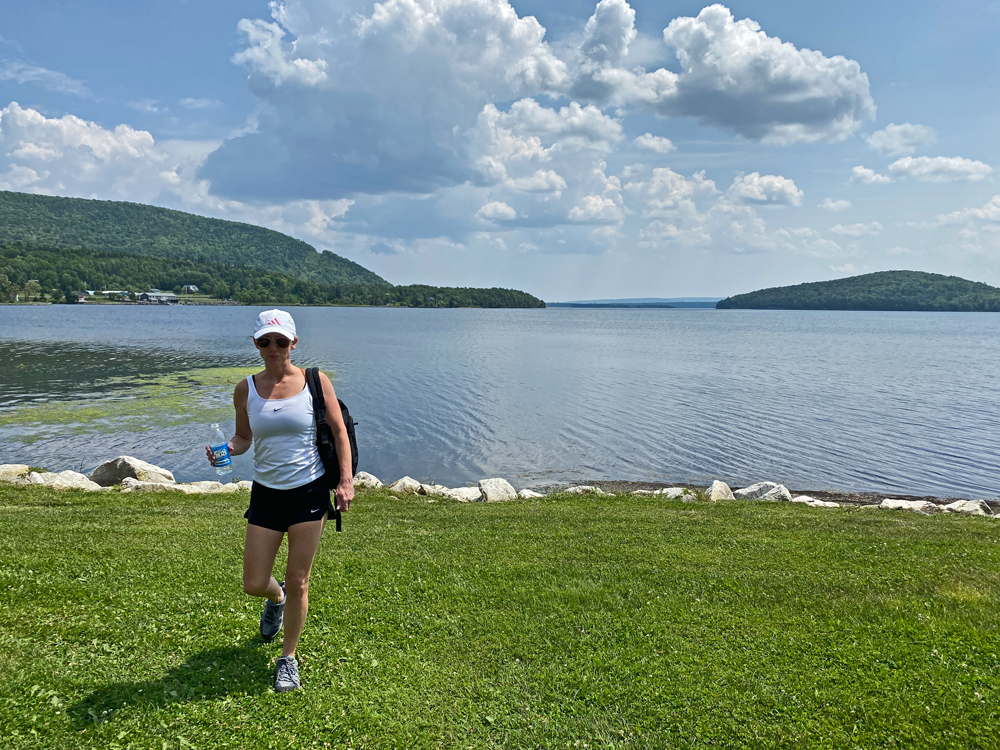 |
|
View
from our cottage at Keltic Quay, Cape Breton Island |
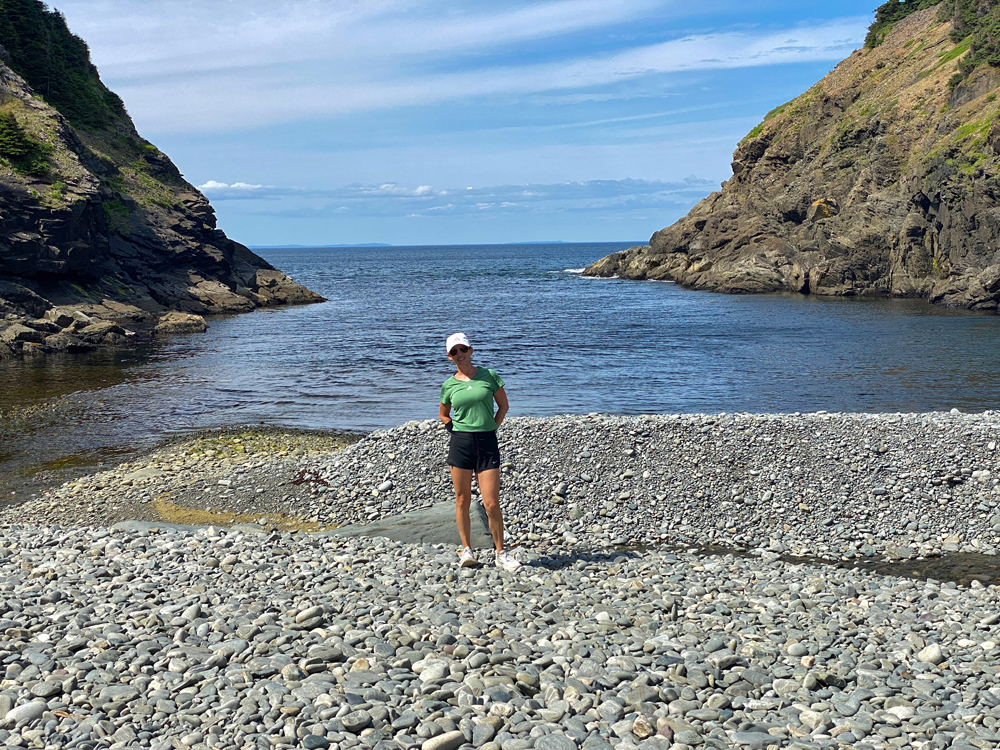 |
|
At Shoe Cove, Newfoundland |
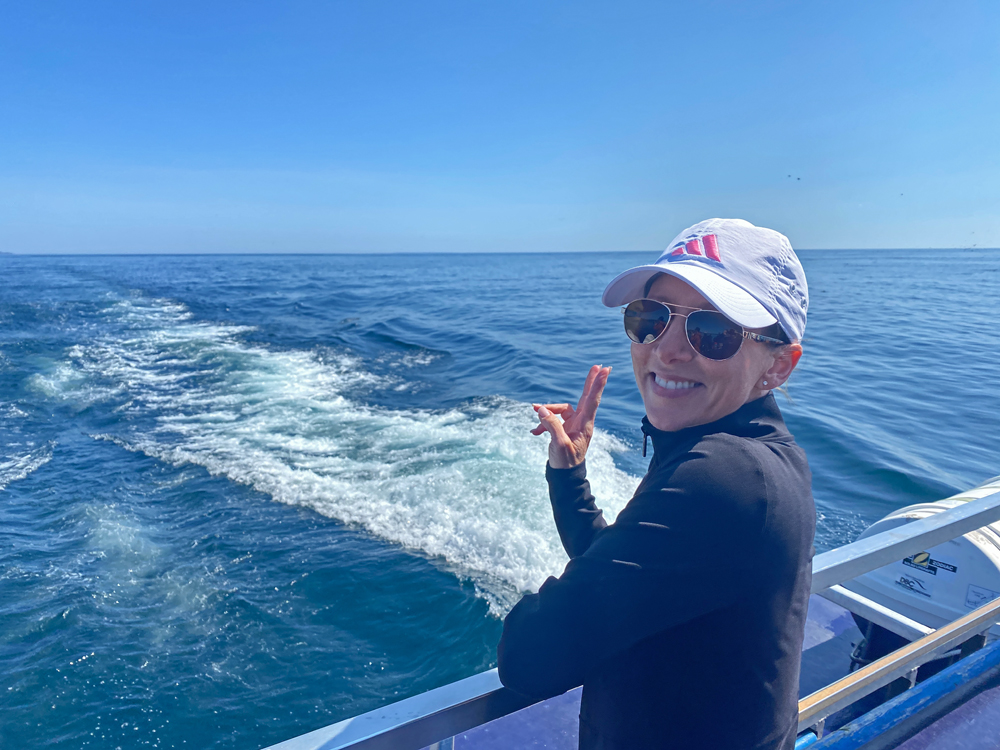 |
|
Whale and Puffin Boat
Tour, Bay Bulls, Newfoundland, For a video of Humbacks we saw
click Here |
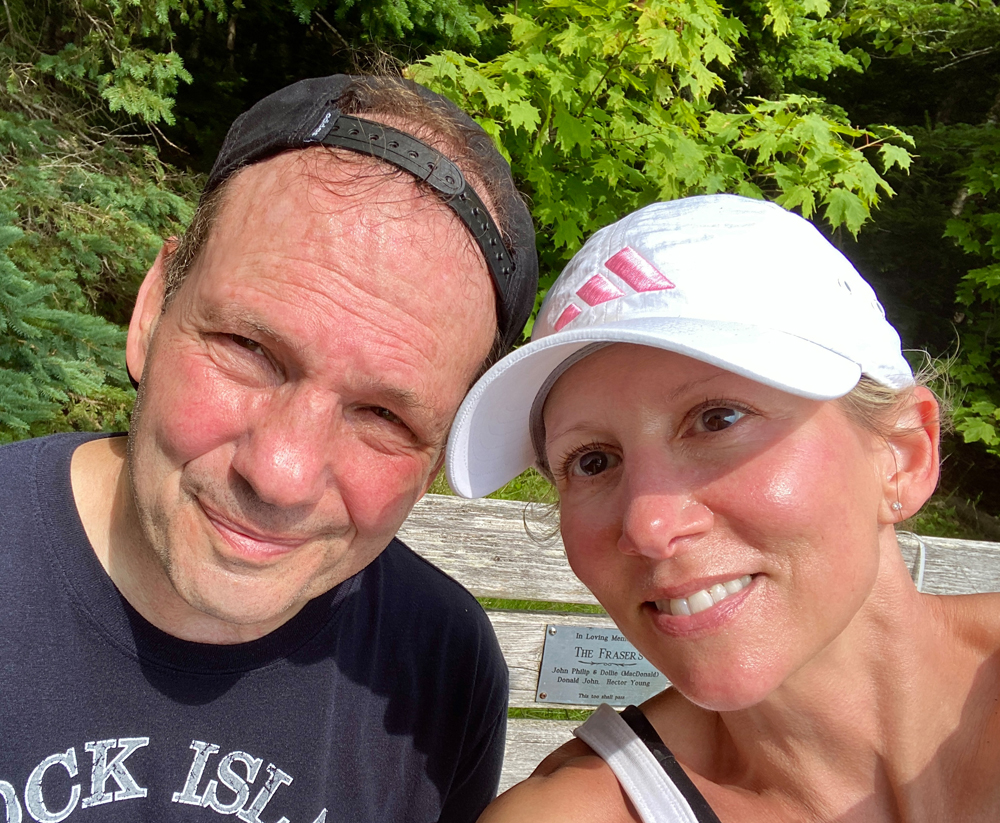 |
|
Me and my lady |









